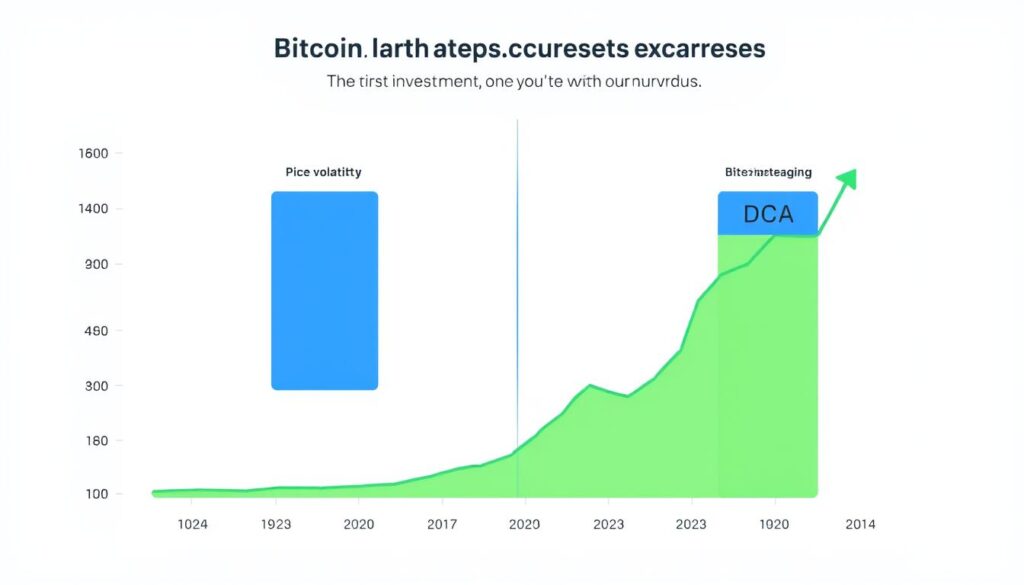Now Reading: Discover the Steps on How to Evaluate Crypto Project Whitepaper
- 01
Discover the Steps on How to Evaluate Crypto Project Whitepaper
Discover the Steps on How to Evaluate Crypto Project Whitepaper

Every significant digital asset begins with a blueprint. This foundational document, known as a whitepaper, outlines the core vision and technical mechanics of a venture. For anyone exploring this space, understanding these documents is a vital first step.
Historical examples highlight their power. The Bitcoin whitepaper introduced a revolutionary peer-to-peer electronic cash system. Ethereum’s document expanded the vision with smart contracts and decentralized applications. These papers laid the groundwork for entire ecosystems.
A well-crafted whitepaper offers critical information about a team’s goals, technology, and economic model. It separates serious endeavors from poorly conceived ones. Analyzing this content helps you make an informed investment decision.
This guide provides a practical framework for your review process. You will learn to identify key strengths and potential warning signs. Mastering this skill is essential for navigating the dynamic world of digital assets.
Key Takeaways
- Whitepapers act as the technical and visionary foundation for any digital asset venture.
- Influential documents, like those for Bitcoin and Ethereum, have historically shaped the entire industry.
- These papers provide essential details on technology, goals, and tokenomics.
- Critical analysis helps distinguish legitimate opportunities from risky propositions.
- Developing this skill is crucial for making informed decisions in a complex market.
Understanding the Foundation of Crypto Whitepapers
Before any code is written or tokens are minted, a cryptocurrency initiative requires a foundational document. This white paper acts as the project’s complete guide. It combines a visionary manifesto, a technical manual, and a strategic business plan into one essential resource.
The term itself has a rich history. It originated in government, with the Churchill White Paper of 1922 being an early example. These documents presented policy ideas before they became law.
Purpose and Importance of Whitepapers
Developers create these papers to explain their technology, goals, and team. The purpose is transparency. It allows potential supporters to understand the venture’s full scope and legitimacy.
Historical Impact: Bitcoin and Ethereum
Satoshi Nakamoto released the Bitcoin white paper in 2008. It introduced a peer-to-peer electronic cash system. This breakthrough removed the need for central intermediaries in financial transactions.
Later, the Ethereum whitepaper expanded the possibilities of blockchain. It proposed smart contracts and decentralized applications (dApps). This opened the door for a vast new world of programmable cryptocurrency uses.
These foundational papers set a high standard. They demonstrated what a serious and influential document should achieve.
Key Components of a Crypto Whitepaper
Breaking down a whitepaper into its fundamental parts provides clarity on what makes a digital asset venture credible. Most legitimate documents follow a predictable structure with distinct sections.

Introduction, Technology, and Objectives
The opening section sets the stage. It clearly states the problem being solved and presents the proposed solution. This part captures reader attention while establishing the venture’s purpose.
Technical details form the core of the document. This section explains the blockchain architecture, consensus mechanisms, and security protocols. Strong technical content demonstrates genuine innovation.
Tokenomics reveals the economic model. It details token distribution, supply mechanisms, and utility within the ecosystem. This information helps assess long-term viability.
| Component | Purpose | Key Questions Answered |
|---|---|---|
| Introduction | Problem identification and solution overview | What problem does this solve? Why does it matter? |
| Technical Details | Technology explanation and innovation showcase | How does the technology work? What makes it unique? |
| Tokenomics | Economic model and token utility | How are tokens distributed? What is their purpose? |
| Roadmap | Development timeline and milestones | What are the planned achievements? Are timelines realistic? |
| Team Section | Credibility establishment through experience | Who is behind the project? What are their qualifications? |
Each component serves a specific evaluative function. Missing or weak sections should raise concerns about the initiative’s legitimacy. A thorough analysis of these papers begins with understanding this standard structure.
The roadmap outlines development stages and partnership goals. It shows realistic planning capabilities. The team section establishes credibility through relevant experience and qualifications.
how to evaluate crypto project whitepaper
Developing a structured methodology for document analysis empowers individuals to make confident financial choices. This systematic approach transforms complex technical papers into understandable investment criteria.

A repeatable framework helps investors consistently assess venture legitimacy. It prevents emotional decisions and identifies genuine opportunities.
Step-by-Step Analysis Method
Begin with clarity and transparency assessment. Legitimate documents explain concepts without excessive jargon. Vague statements often indicate underlying issues.
Next, examine technical feasibility. Determine if the solution offers genuine innovation. Many ventures simply replicate existing technologies without meaningful improvements.
Evaluate goals and timelines for realism. Ambitious promises without credible execution plans represent significant red flags. Achievable milestones demonstrate proper planning.
Token utility within the ecosystem requires careful analysis. The digital asset should serve a clear, necessary purpose. Well-designed economics ensure long-term value.
Finally, research team credentials thoroughly. Verify backgrounds, qualifications, and track records. Anonymous or unverifiable team members warrant additional caution.
Mastering this analytical process becomes intuitive with practice. It enables independent research rather than reliance on external opinions. For comprehensive guidance, explore our complete investment analysis framework.
Technical Analysis: Blockchain, Token Distribution, and Smart Contracts
The technical architecture of a digital asset venture reveals its true potential and operational integrity. A deep dive into the underlying technology separates ambitious, well-founded initiatives from superficial ones.
This analysis focuses on the core components that power the network. Understanding these elements is crucial for assessing long-term viability.
Examining Blockchain Technology and Consensus Mechanisms
First, identify the foundation. Is the venture building a new blockchain or using an established one like Ethereum? This choice impacts development complexity and security.
The consensus algorithm is the network’s heart. Proof of Work (PoW) and Proof of Stake (PoS) are common. Each mechanism balances security, energy use, and decentralization differently.
Blockchain technology must also address scalability. Solutions like Layer 2 networks or sharding help handle growth. Projects like Polygon demonstrate effective scalability enhancements.
Security Measures and Smart Contract Functionality
Network security is non-negotiable. Look for details on cryptographic methods and third-party audit reports. A commitment to protecting user assets is a strong positive signal.
If the platform uses smart contracts, examine their functionality. Do they introduce innovation, like Chainlink’s oracles? Or do they rely on standard templates?
Well-designed smart contracts are essential for complex blockchain projects. They enable automated, trustless agreements within the ecosystem.
Assessing Tokenomics and Investment Potential
Token economics represents the financial heartbeat of any blockchain-based initiative, dictating its sustainability and growth potential. This economic framework governs how digital assets circulate, gain value, and incentivize participation.
Understanding Token Distribution and Utility
Fair token distribution creates strong community foundations. Examine allocation percentages among team members, early investors, and public participants. Concentrated holdings often signal future price volatility.
Token supply mechanics directly impact scarcity and value. Limited maximum supplies, like Bitcoin’s 21 million cap, create natural deflationary pressure. Unlimited emission schedules can dilute holder investment over time.

Utility determines real-world demand for digital assets. Essential functions like transaction fees, governance rights, or platform access create sustainable token utility. Without clear use cases, tokens become purely speculative instruments.
| Tokenomics Component | Critical Assessment | Investment Impact |
|---|---|---|
| Distribution Model | Fairness and decentralization level | Community trust and price stability |
| Supply Mechanics | Inflationary vs. deflationary design | Long-term value preservation |
| Utility Framework | Essential ecosystem functions | Sustainable demand generation |
| Economic Incentives | Staking, governance, participation rewards | Holder engagement and network security |
Well-structured tokenomics aligns participant incentives with network growth. It transforms technical innovation into sustainable economic models that benefit all stakeholders in the digital asset market.
Scrutinizing the Project Roadmap and Future Milestones
A strategic roadmap serves as the navigational chart for any blockchain initiative’s journey. This document outlines the planned progression from current status to future objectives. It reveals the team’s planning capabilities and commitment to transparency.

Careful examination of this timeline provides critical insights into the venture’s potential. A well-structured plan demonstrates serious intent and operational competence.
Evaluating Milestones, Timelines, and Partnerships
Look for specific, measurable milestones with clear timelines. Vague aspirations without concrete dates often indicate poor planning. Successful projects like Chainlink demonstrate logical phase progression.
Technical upgrades should address real market needs. Protocol improvements and network enhancements show commitment to development. These elements position the initiative for long-term growth.
Partnerships with established companies signal validation and expansion potential. Strategic integrations with other platforms accelerate adoption. These collaborations strengthen the overall ecosystem.
Assess user acquisition strategies within the timeline. Community building and retention plans are crucial for success. Realistic goals account for time and resource constraints.
Finally, verify that the roadmap allows flexibility for inevitable market changes. Adaptability is essential in the dynamic blockchain space. This comprehensive review separates achievable plans from unrealistic promises.
Evaluating the Team, Transparency, and Red Flags
Technical brilliance means little without the right people to execute the vision in the volatile digital asset space. The development group’s composition serves as a critical indicator of legitimacy and potential success.
Team Credibility and Relevant Experience
A competent team possesses specialized knowledge to navigate complex challenges. Verify each member’s background in blockchain technology or related fields.
Research previous roles and successful ventures thoroughly. Reputable teams build trust and attract community support effectively.
Adaptability proves essential for handling market changes and unexpected obstacles. Strong groups demonstrate flexibility in their approach.
| Red Flag Category | Specific Warning Signs | Potential Implications |
|---|---|---|
| Team Composition | Anonymous members, small team size | Lack of accountability, execution risks |
| Experience Gaps | No blockchain background, unverified claims | Technical incompetence, failed delivery |
| Transparency Issues | Hidden identities, vague role descriptions | Trust erosion, potential exit scams |
| Unrealistic Promises | Guaranteed high returns, revolutionary claims | Speculative nature, potential fraud |
Identifying Warning Signals and Vague Claims
Watch for documents filled with marketing language instead of substantive information. Legitimate ventures present evidence-based projections.
Missing technical details or plagiarized content represent serious red flags. These flags indicate poor preparation and potential deception.
Excessive focus on celebrity advisors over core developers raises concerns. The main team should drive the project forward.
Thorough due diligence protects investors from problematic blockchain projects. Careful examination separates genuine opportunities from risky ventures.
Conclusion
With the evaluation skills you’ve developed, you can approach any blockchain initiative with confidence. Your analysis of these technical documents now covers technology, economics, and team credibility.
Remember that document review represents one component of a complete strategy. Diversification and ongoing research remain essential for long-term success. The market evolves constantly, requiring continuous learning.
Well-structured papers establish transparency and build trust within the community. They serve as blueprints for legitimate ventures with real utility. Your analytical approach rewards genuine innovation.
As you apply this framework, your ability to identify promising opportunities will grow. For additional insights, consider this comprehensive whitepaper analysis guide. Your informed decisions contribute to a healthier ecosystem.
FAQ
What is the main purpose of a cryptocurrency whitepaper?
A whitepaper serves as a foundational document detailing a project’s vision, technology, and goals. It provides essential information for investors to understand the proposed solution, its use case, and the underlying blockchain technology. A strong whitepaper establishes credibility and transparency.
Why are the tokenomics and token distribution model critical to review?
Tokenomics defines the economic structure of a token, including its utility, supply, and distribution. Analyzing this section helps assess the long-term value and potential for growth. A fair and transparent token distribution plan is crucial to avoid excessive concentration that could harm the market.
What are common red flags in a blockchain project’s whitepaper?
Warning signals include an anonymous team, unrealistic promises of high returns, a poorly defined roadmap, and vague technical explanations. A lack of detail on security audits for smart contracts or an unclear token utility are also significant concerns that warrant further research.
How important is the project’s roadmap for making an investment decision?
The roadmap is vital as it outlines the development timeline and future milestones. A realistic and detailed roadmap demonstrates a clear plan for growth and execution. It should include specific goals, partnerships, and technological upgrades, showing the team’s commitment to long-term development.
What should I look for when evaluating the team behind a cryptocurrency project?
Look for team members with verifiable credentials and relevant experience in blockchain technology, software development, or the specific industry the project targets. Transparency about team members’ backgrounds, such as their LinkedIn profiles or past work at reputable companies, builds trust and credibility.
How does the technology section of a whitepaper impact a project’s potential?
The technology section explains the core innovation, such as the consensus mechanism or unique applications of smart contracts. A well-articulated, technically sound proposal indicates a solid foundation. It should clearly explain how the technology solves a real-world problem better than existing solutions.













